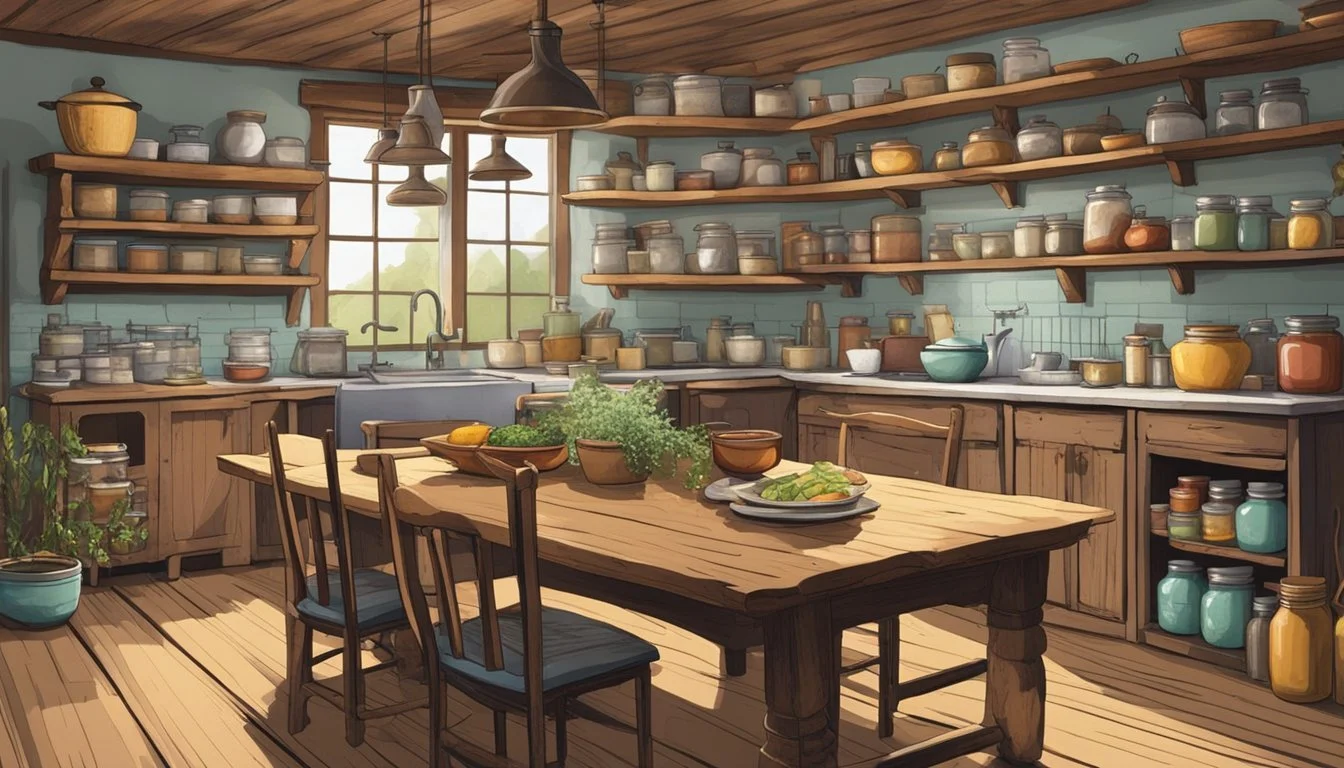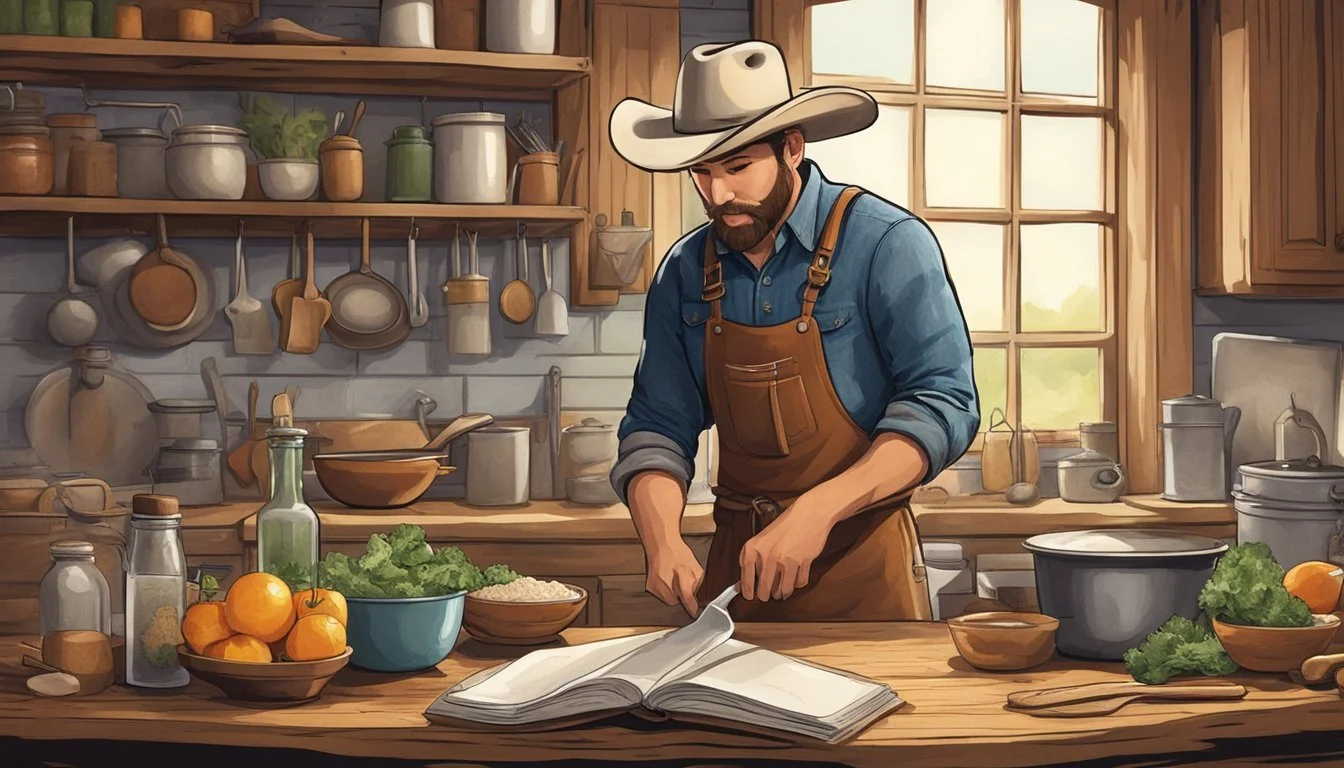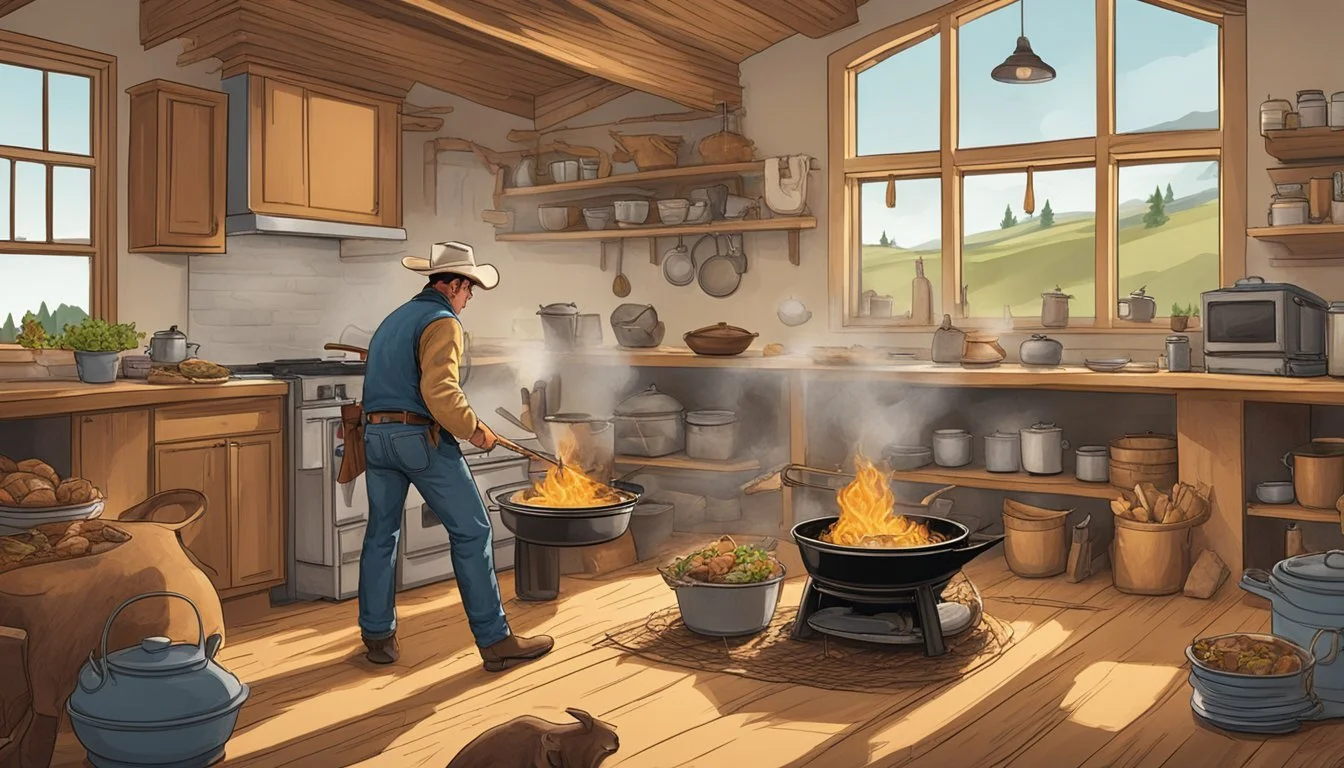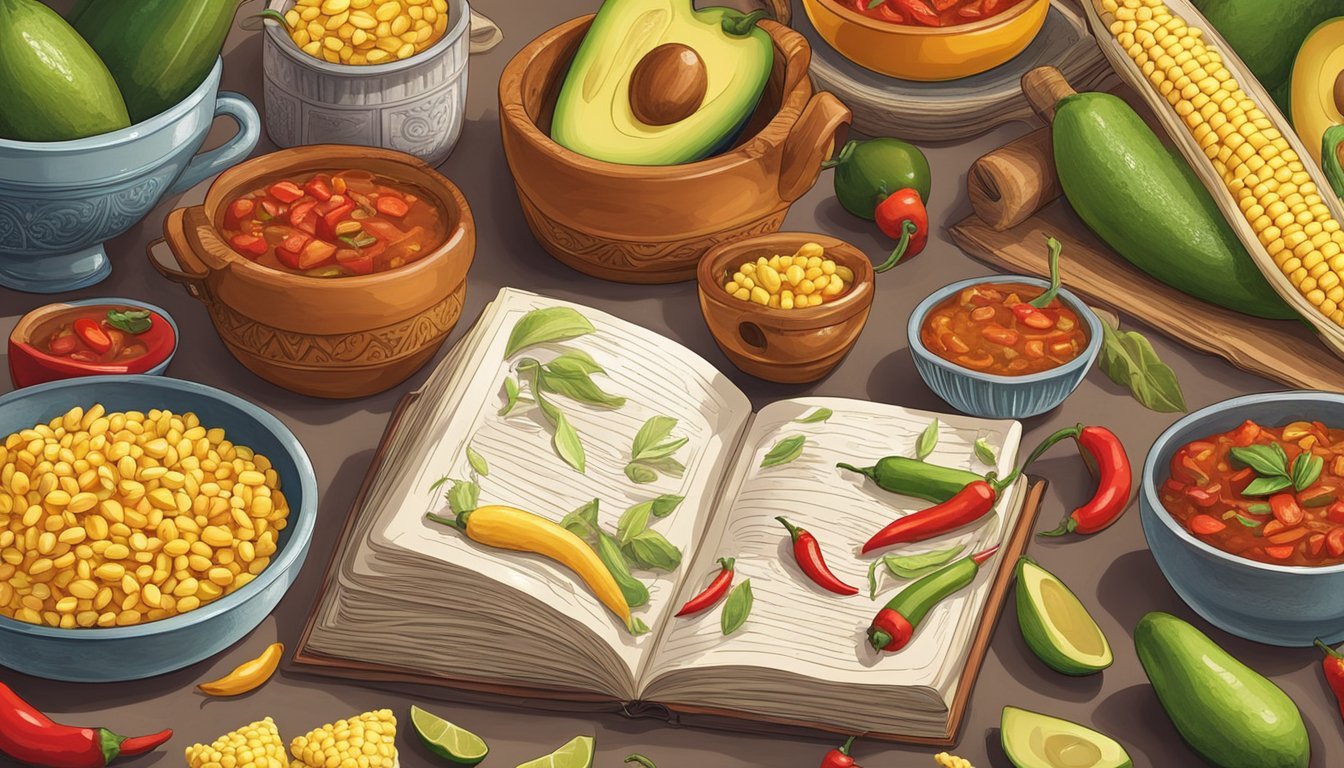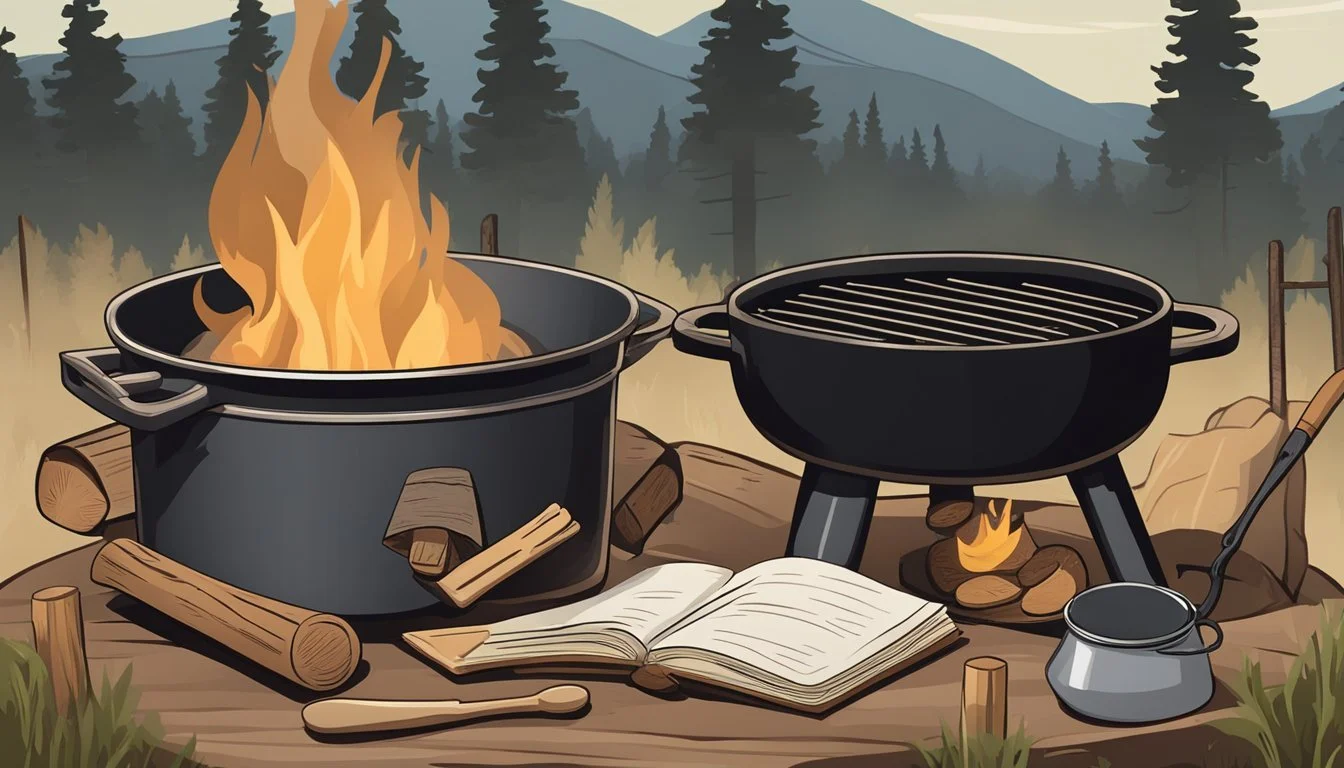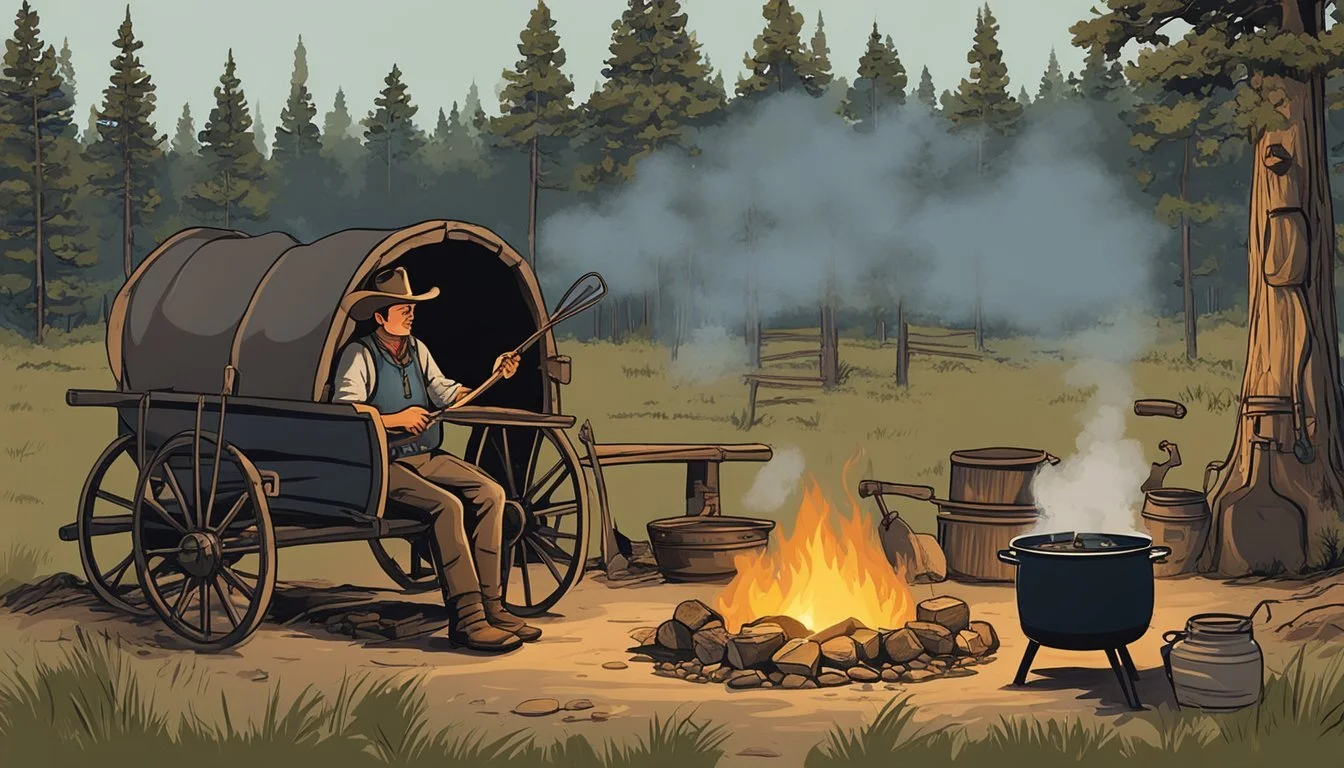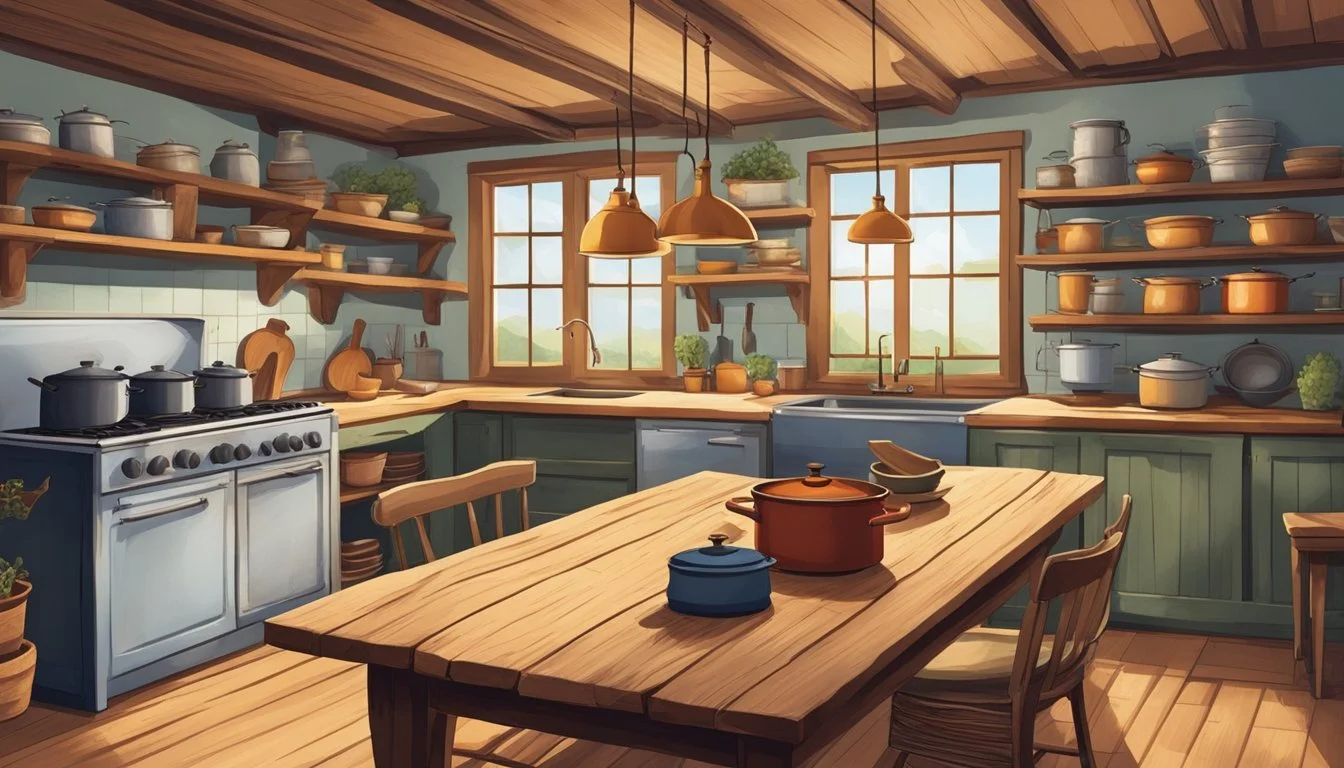The Texas Cowboy's Home Cooking
A Treasury of Time-Honored Recipes
The Texas cowboy's culinary tradition embodies the spirit of simplicity and resilience. These recipes, honed over campfires and cattle drives, tell the story of a unique blend of cultures and the necessity of nourishing meals in the rugged lifestyle of the Old West. The chuckwagon may have been their kitchen, but the recipes developed therein have become beloved household favorites, passed down through generations of Texans.
Home cooking in Texas has always been about more than just sustenance. It's a fusion of Mexican, Native American, and European influences, each adding distinct flavors and techniques to create a cuisine both robust and comforting. From hearty cowboy chili to tender BBQ ribs and the classic biscuits and gravy, these dishes are a testament to the diverse heritage and enduring legacy of cowboy cookery.
Family gatherings and community celebrations in Texas often feature these time-honored dishes, which continue to be shared and savored. Recipes like great-grandma's pound cake or a hearty beef stew have been carefully preserved, ensuring that each generation can experience a taste of their family's history. Through these meals, the essence of Texas cowboy cooking lives on, as each dish weaves a narrative of the past into the fabric of the present.
Origins of Texas Cowboy Cuisine
Texas cowboy cuisine is deeply rooted in the state's rich and varied history, reflecting the influence of cowboy culture and the Old West. This culinary tradition traces back to the cattle drives of the 19th century when cowboys, often enduring long and arduous journeys, needed hearty meals that could be prepared on the open range.
Key Influences
Mexican Vaqueros: The very first cowboys, their techniques and recipes significantly shaped Texas ranching and cooking.
European Settlers: The introduction of European culinary practices added variety to Texas cuisine.
Native Americans: Indigenous cooking methods and ingredients, such as corn, were fundamental to the cowboy's diet.
One pivotal figure in the evolution of Texas cowboy cuisine is Charles Goodnight. In the mid-1800s, he revolutionized field cooking by inventing the chuckwagon. This allowed cowboys to carry food and cooking equipment during cattle drives, leading to the birth of the iconic cowboy cooking style.
Typical Ingredients and Meals
Beef: The cornerstone of cowboy cuisine due to the abundance of cattle.
Beans: A staple for their nutritional value and long shelf life.
Corn: Used in various forms, from tortillas to cornbread.
Chili Peppers and Spices: These enhanced the flavors and created robust dishes able to withstand long cook times.
These ingredients and types of meals continue to exemplify the tradition and heritage of Texas cowboy culture, offering a taste of the Old West that has been passed down through generations, and remains embedded in the state's culinary identity.
Essential Cowboy Cooking Techniques
The culinary heritage of Texas cowboys is renowned for its rugged charm and rustic flavors. Grilling, smoking, and mastery of the Dutch oven are cornerstones of this tradition, complemented by the array of dishes that originated from the chuckwagon—a mobile kitchen born on the cattle trails.
Grilling and Smoking
Texas cowboys typically employ grilling and smoking as primary methods to enhance the natural flavors of meat. These techniques involve:
Grilling over an open flame, which imparts a unique smoky taste especially to cuts of beef, a staple in cowboy cuisine.
Smoking at low temperatures for several hours, which not only tenderizes tougher cuts but also instills a deep, smoky essence.
Key to success is the direct exposure to fire, with careful attention paid to the cooking temperature and timing to ensure meat is cooked to perfection.
Dutch Oven Mastery
The Dutch oven is synonymous with cowboy cooking on the range. This heavy cooking pot with a tight-fitting lid serves as a versatile tool where cowboys can prepare a variety of dishes, such as:
Main dishes, including stews (What wine goes well with stews?) and braises, where the beef can simmer to tenderness.
Breads, like cornbread or biscuits, that come out fluffy and hot, perfect for a side or breakfast.
Desserts, such as cobblers or puddings, providing a sweet end to a hearty meal.
Key techniques include:
Regulating heat by strategically placing coals beneath and on the lid of the Dutch oven.
Layering ingredients appropriately to ensure even cooking.
Chuckwagon Staples
Chuckwagon cooks, or cookie as they were often called, were responsible for more than just preparing food. They packed essentials and maintained the mobile kitchen. Staples of chuckwagon cooking often included:
Beans and corn, serving as the backbone for many dishes.
Chili peppers and spices, providing zest and flavor, true to the spirited taste of cowboy meals.
Easy-to-preserve items such as dried beef or jerkies.
A focus on hearty, communal meals kept the spirit of cowboy cooking alive, with straightforward preparation methods that could easily be replicated on the open range.
Signature Dishes of the Lone Star Cowboy
The Texas cowboy's culinary tradition is built on a foundation of hearty stews and chili, ranch-style sides, and delectable desserts that reflect the spirit and resilience of the Wild West.
Hearty Stews and Chili
Texas cowboys are renowned for their robust stews and chili, which often act as the centerpiece of their meals. Chili is a quintessential dish, combining beef, chili peppers, and a variety of spices including cumin and chili powder. Authentic recipes favor simplicity and heartiness, with a focus on rich flavors and satisfying textures.
Beef Stew: A hearty blend of tender beef chunks, potatoes, carrots, and onions, seasoned with thyme and black pepper.
Cowboy Chili: Typically made with coarse-ground beef, simmered with onions, beans, tomato base, and a custom blend of spices like cumin and garlic.
Ranch-Style Sides
Complementing the stews and chilis are sides that embody the practicality and resourcefulness of cowboy cooking.
Beans: Pinto beans stewed and often flavored with bacon, onions, and a touch of molasses.
Corn: Prepared as cornbread or used in various dishes, such as corn pudding or added to stews for sweetness and texture.
Sourdough Biscuits are another staple, providing a dense, filling bread that paired well with hearty ranch meals.
Traditional Cowboy Desserts
Rounding off the cowboy meal, desserts were more than just a sweet treat; they provided additional energy for a long day's work.
Pecan Pie: A classic, sweet pie with a rich filling made of pecans, eggs, butter, and sugar.
Peach Cobbler: This dessert features ripe peaches baked into a latticed pastry crust, often served with a side of homemade ice cream.
Cowboy Cooking Ingredients
The foundation of traditional cowboy cuisine is simple, hearty ingredients that provide the necessary sustenance for a long day's work. These ingredients have passed through generations, each adding their own local spin.
Protein: At the heart of cowboy dishes, beef is a staple protein, often slow-cooked or grilled, and is central to many traditional recipes. It's not uncommon to find other proteins such as pork or chicken, but beef often takes precedence.
Beans: Cowboys favor beans for their protein content and ease of storage. Pinto beans are traditional, but recipes may also call for kidney beans or black beans. Beans are typically stewed or prepared as a filling side.
Common Beans Pinto Beans Kidney Beans Black Beans
Corn: A versatile ingredient, corn can be found in breads, as a side dish, or ground into flour for various uses. It's synonymous with cowboy food, imbuing dishes with its sweet, earthy flavor.
Flavor Builders: Key to any cowboy recipe are flavor-building ingredients like onions, garlic, tomato, and various chilies. These add depth and character to dishes like stews and chili.
Spices and Herbs: Chili peppers, often in the form of powder, bring heat. Meanwhile, oregano, cumin, and bay leaves provide classic seasoning. For a touch of sweetness, a hint of brown sugar can balance the robust flavors.
Additional Enhancers:
Tomatoes, both fresh and canned, are vital for creating rich, hearty sauces.
A splash of beer is sometimes used for braising meats or adding a depth of flavor to chili.
The approach in cowboy cooking is to create dishes steeped in flavor using readily available, durable ingredients that stand the test of time and hard work.
Cowboy Coffee and Breads
In the life of a Texas cowboy, coffee and bread are not just staples but also a beloved tradition. The brewing of coffee and baking of bread in the open range has produced distinctive methods and recipes.
The Art of Cowboy Coffee
Cowboy coffee, the quintessential start to a cattle-herder’s morning, is brewed with nothing more than coffee beans, water, and a pot. Here is a simplified process of making cowboy coffee:
Bring water to a boil in a coffee pot over an open fire.
Add coarsely ground coffee beans—about one tablespoon per cup of water.
Stir the mixture and bring it back to a near-boil.
Let it steep for a few minutes off the flame.
Settle the grounds by tapping the pot or adding a splash of cold water.
Pour and enjoy, ensuring the grounds remain at the bottom of the pot.
This brewing method creates a robust and flavorful cup of coffee that is enjoyed without the luxury of filters or press equipment.
Sourdough Bread and Biscuits
Sourdough was a practical choice for cowboys; they could carry a sourdough starter, a fermented mixture of flour and water teeming with wild yeast and bacteria, on long cattle drives or camping trips to leaven their bread. The natural leavening provided the advantage of not requiring store-bought yeast and could last indefinitely, with proper care.
Sourdough biscuits are a common variant, with the preparation typically as follows:
Mix: Combine flour and salt with cut-in lard or butter.
Add: Pour in the "sponge", a bubbly mix comprising sourdough starter, milk, and other ingredients.
Knead: Fold the mixture into a cohesive dough.
Cut out biscuits: Roll out the dough and use a biscuit cutter.
Bake: Cook in an oven or Dutch oven until golden brown.
Biscuits and other sourdough bread variations were favored for their simplicity and the tangy taste that sourdough imparts, a welcome complement to cowboy coffee.
From Cattle Drives to Modern Tables
The transition from cattle drives to the culinary tables of today bridges centuries of cowboy traditions. These practices transformed into a unique culinary culture that persists in contemporary kitchens.
Cultural Impact of Cattle Drives
Cattle drives were crucial in shaping the American West’s culture as they fueled the cattle industry. Cowboys were at the center of these endeavors, responsible for the arduous roundups and managing the herds across vast terrains, from Texan ranches to railway depots in Kansas. These drives not only propelled the cattle industry but also forged a robust culinary identity. Communal meals on the trail led to the development of comfort food that could be prepared in harsh conditions. The Texas cowboy cookbook emerged as a collection of these hearty meals, documenting authentic recipes that were optimized for preparation over an open flame.
Contemporary Interpretations of Cowboy Fare
In modern times, the legacy of cowboy fare has evolved while staying true to its roots. Contemporary chefs draw inspiration from historical cowboy culinary culture to recreate dishes with a nod to authenticity. Dutch ovens, once the primary cooking vessel on the range, are now featured in modern kitchens to prepare cowboy comfort food. These foods, which were simple and nourishing out of necessity, are embraced for their wholesomeness and rich flavors.
From classic stews and biscuits to innovative takes on traditional beef dishes, these recipes handed down through generations serve as both a nod to the past and a cherished staple on today's tables. Whether cooked in a state-of-the-art kitchen or over a campfire, these historic flavors continue to be a testament to the enduring spirit of the Texas cowboy.
The Visual Story of Cowboy Cooking
Cowboy cooking has a rich visual heritage, with historical photos and illustrations displaying the rugged beauty of the range and the communal spirit around the chuckwagon. Modern presentations of these same dishes celebrate tradition while embracing contemporary aesthetics, offering a feast for the eyes as much as the palate.
Historical Photos and Illustrations
Historical visuals of cowboy cooking capture the essence of life on the range. Photographs from the era depict cowboys and vaqueros (Spanish cowboys), including influential black cowboys, gathered around open fires preparing hearty meals. Through these images, one can see the practical cookware like the Dutch oven used for everything from cowboy beans to sourdough bread. Illustrations in early cookbooks and periodicals provided a romanticized view of this lifestyle, often emphasizing the camaraderie and the hardworking nature of these trail cooks.
Photos: Display the rugged outdoor cooking environment and diverse cowboy community.
Illustrations: Found in early cookbooks, romanticizing the cowboy lifestyle.
Cookware: Showcased the essential tools used, such as cast iron Dutch ovens and griddles.
Modern Presentation of Dishes
In contrast to the rustic images of the past, modern presentations of cowboy cuisine blend tradition with contemporary plating techniques. Cookbooks and culinary shows demonstrate how dishes like cowboy beans can be served with an eye for color and texture. Restaurants that draw inspiration from this heritage often present their dishes on wooden boards or in cast iron skillets, nodding to the traditional cowboy cooking methods while ensuring each plate is visually appealing.
Plating: Modern aesthetics applied to traditional dishes.
Restaurants: Incorporate cowboy themes in the ambiance and dish presentation.
Cookbooks: Provide step-by-step visual guides to creating cowboy cuisine at home.
Tex-Mex Influences and Fusion
Tex-Mex cuisine has woven itself into the fabric of Texas cowboy home cooking, merging the rustic fare of the American West with the rich flavors of Mexican tradition. Chili, a quintessential Tex-Mex dish, often finds its place at the cowboy dining table, bringing together the heat of a variety of spices with the heartiness expected of a meal on the range.
In the heart of South Texas, where the histories of the West and Mexican vaqueros intersect, the culinary fusion is most evident. Fideo con carne, a comforting dish featuring thin noodles in a spicy meat sauce, is one such creation that illustrates the blend of cultures. Ingredients prevalent in Tex-Mex like tomatoes, onions, and garlic join beef—a staple in cowboy kitchens—to create a dish that is both familiar and exotic.
Renowned food writer Robb Walsh has highlighted the significance of such recipes, underscoring their role not just as sustenance but also as a means of cultural storytelling. Each spice and preparation technique embodies a tale of convergence between the cowboy lifestyle and the influences of neighboring Mexican traditions.
Here’s a breakdown of a classic Tex-Mex dish influenced by cowboy traditions:
Main Ingredients: Ground beef or chuck, chili powder, beef broth, onions, garlic.
Preparation Style: Slow-cooked to meld flavors, adapting the Mexican techniques of layering spices.
Typical Spices: Cumin, chili powder, paprika, and sometimes cinnamon for a savory-sweet touch.
Within this culinary melting pot, the West Texas food scene showcases meals that honor both the rugged cowboy ethos and the communal, flavor-packed spirit of Tex-Mex cuisine. Through each bite, diners experience a legacy of survival, adaptation, and community that captures the essence of the Texan spirit.
Cowboy Cooking Equipment and Utensils
In the evolving narrative of cowboy cooking, the importance of specialized equipment and utensils cannot be overstated. These tools are a testament to the resourcefulness and tradition of cowboy cooks who managed to make hearty meals in the open range.
Tools of the Open Range
Dutch Oven: This is the quintessential cooking pot for cowboy cuisine. Made from cast iron, the Dutch oven was used for a multitude of tasks from searing meat to baking bread.
Chuckwagon: At the heart of the mobile cowboy kitchen stood the chuckwagon, which stored food, utensils, and often featured a fold-down lid that served as a cooking surface or work table.
Coffee Pot: Brewing coffee was a vital ritual for cowboys on the range. A large, durable coffee pot that could withstand direct flames was essential.
Utensils: The cowboy cook used simple but effective tools like spatulas, knives, and long-handled forks specifically designed for use over an open fire.
Cowboys depended on these durable tools to withstand the harsh conditions of the open range and facilitate their daily cooking endeavors. They were efficient in meeting the demands of preparing a wide range of dishes with a simplicity that is still admired today.
Modern Cowboy Kitchen Essentials
Cast Iron Skillets: A favorite in the modern cowboy kitchen, skillets are versatile for frying, sautéing, and baking.
Dutch Ovens with Lids: Continuously serving as a versatile pot, today's Dutch ovens may feature enamel coatings and are used for stews, chili, and deep-frying.
Grill Grates: Used to place over a campfire, these grates support pots or food directly, offering a grilled or smoked flavor to dishes.
While today's equipment has evolved to incorporate modern materials and conveniences, the essence of cowboy cookware remains: tough, multipurpose, and ideal for hearty, flavorful cooking.
Preserving Cowboy Cooking Traditions
Preserving the heritage of cowboy cooking is akin to keeping a page from history alive. It's a tribute to the cowboy culture and life of the old west. The grand cattle drives and roundups of the past saw the birth of unique dishes that have become symbols of this resilient spirit. Cowboy beans, a staple of this cooking tradition, exemplify the hearty meals that fueled cowboys during long trail drives.
Traditional cowboy cooking methods have been passed down through generations and withstand the test of time. These culinary practices are celebrated in festivals and embodied in cookbooks such as those by Robb Walsh, who brings the cowboy's kitchen to modern homes with a clear eye for authenticity.
Chuckwagon Competitions: These cook-offs are not mere contests but vibrant celebrations of the past, where participants prepare traditional cowboy dishes using historical cooking methods.
Festivals and Rodeos: These events often feature cowboy cooking demonstrations, ensuring the tradition is shared widely.
Cooking over an open fire, the transformation of simple ingredients into nourishing meals speaks to the ingenuity of cowboy cooks of the old west. The importance of preserving these cooking traditions lies not only in the flavors and recipes themselves but also in the embodiment of independence, resourcefulness, and connection to the land that cowboy life represents.
By documenting the recipes and methods in cookbooks or presenting them in community gatherings, the essence of the cowboy era persists. The spirit of camaraderie and the simple, fulfilling life of cowboys remain etched in the culinary heritage of the American West.
Cowboy Cooking for Special Occasions
Cowboy cooks often showcase their culinary heritage during special gatherings and holidays by preparing hearty, traditional fare that embodies the spirit of the range.
Roundup Feasts
At roundup times on ranches, the cowboy cook's expertise is on full display, transforming these work-intensive periods into a celebration of community through food. The Roundup Feast tends to focus on vast quantities of grilled meats, often including beef brisket (What wine goes well with beef brisket?) and sausages, served alongside hearty beans, biscuits, and seasoned vegetables. Cowboy coffee, a robust brew cooked over the open flames, becomes an essential element of the feast, holding a special place in cowboy culture.
Mains: Brisket, sausages, ribs
Sides: Beans, coleslaw, corn on the cob
Beverage: Cowboy coffee
Holiday Recipes with a Cowboy Twist
During holidays, cowboys blend traditional festive ingredients with their distinct culinary style. A fried turkey or a smoky ham might grace the table, alongside sides of spicy chili or cornbread dressing with a cowboy twist. These dishes combine the sense of occasion with the down-home, rustic flavors that have been passed down through generations. Cookouts become an integral part of cowboy holiday traditions, creating memorable experiences that highlight the festive and community aspects of cowboy culture.
Entrees: Fried turkey, smoky ham, chili
Sides: Cornbread dressing, green bean casserole, candied yams
Desserts: Pecan pie, peach cobbler
Closing Thoughts on Cowboy Cuisine
Cowboy cuisine in Texas is not only about the hearty meals; it represents a rich culinary culture steeped in history. Recipes crafted in the past are carried forward, reflecting the resilience and resourcefulness of cowboy life. Dutch ovens and open fires are iconic cooking methods still used today, allowing for a broad range of flavors and techniques unique to this culinary tradition.
Ingredients: Indigenous and locally sourced, ingredients like beef and corn form the backbone of many dishes, exemplifying the connection to the land and to the rugged, self-sufficient cowboy lifestyle.
Techniques: Slow cooking and resourceful use of heat speak to a time when meals were a communal affair, with cooks skillfully preparing sustenance for the trail.
In Texas, cowboy cuisine is a touchstone of state identity, offering a window into the soul of the Old West. Traditional dishes which have survived generations continue being savored and celebrated at modern chuckwagon competitions, bridging the gap between history and contemporary tastes.
The culinary practices of the past enrich today's tables, bringing people together with flavors that are as bold and robust as the cowboy culture itself. Emphasizing simplicity and honesty of flavor, it is a testament to a way of life that values the straightforward over the ornate, impacting Texan tastes and tables across the state. Cowboys may have been known for their skills with livestock and rope, but their legacy in the kitchen is just as enduring.

